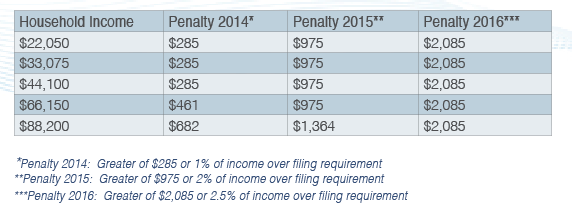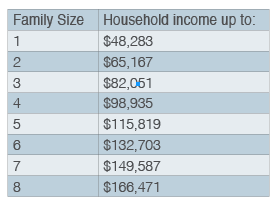Recent reports state that 42 percent of Americans still do not know the Affordable Care Act is law.* Considering this statistic, many of us still have a lot to learn about how the new law’s provisions will affect them.
The law itself is over two thousand pages. Combined with thousands of pages of regulations and hundreds of pages of legal and tax guidance, it is no surprise that most people haven’t become familiar with the details. With so much information, it’s hard to know where to start. Here are some key provisions every American should be aware of now:
- Nearly every American is required to be covered by a health plan starting on January 1, 2014.
- Unless you meet an exemption, you’ll face a penalty for remaining uninsured.
The penalty amount for remaining uninsured phases in over the next few years.
This chart llustrates the potential penalties for a family of four, with income required to file a return at $20,000:

Many Americans will be able to receive financial assistance through a subsidy to help cover their health care costs. Depending on your income and family size, you may qualify for some form of government assistance, including:
- Lower monthly premiums.
- Lower out-of-pocket costs for things like co-payments, co-insurance, and deductibles.
- Free or low-cost coverage through Medicaid or the Children’s Health Insurance Program.
This chart shows who may qualify for credits to help pay for their monthly premiums:

Other noteworthy highlights:
- The Health Insurance Marketplace (sometimes referred to as the Health Insurance Exchange) will be set up for individuals and small businesses to purchase insurance. Open enrollment on the Marketplace begins October 1, 2013, for coverage starting January 1, 2014.
- Find out if you qualify for coverage at a lower cost by going to www.Healthcare.gov and submitting an application starting October 1st. There are guides on the site now that can help you get ready for open enrollment.
- Remember, if you’re covered under an employer-sponsored health plan then you meet the insurance requirement and will not be subject to penalties.
- If you don’t currently have health insurance and don’t know if you’ll qualify for assistance, start doing your homework now. October 1st is right around the corner. If you miss out on the initial open enrollment period, you will have to wait to get coverage on the Marketplace in next year’s open enrollment period.